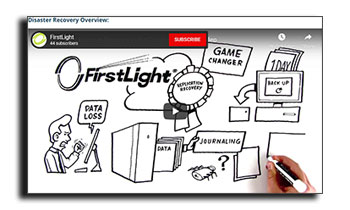
Downtime after a natural disaster, major equipment failure, or even human error negatively impacts your bottom line. Statista found that downtime could cost some companies more than $5 million per hour.
Why is downtime so costly? It’s unpredictable. A business interruption may last anywhere from a few hours to a few weeks — or even longer.
Despite the cost of downtime, many companies do not have a formal disaster recovery (DR) plan, and if they do, they don’t regularly test it. According to the insurance company Nationwide, 68% of small businesses lack a written DR plan.
If your company doesn’t have a DR plan, downtime can be disastrous, exposing your company to potential losses and potentially causing it to go out of business.
Here’s a closer look at some of the ways inadequate DR planning can impact your business financially:
Losing Revenue
 When your company experiences downtime, customers can’t buy your products and services. For every hour your systems are down, you lose the revenue and credibility that you would gain from these purchases.
When your company experiences downtime, customers can’t buy your products and services. For every hour your systems are down, you lose the revenue and credibility that you would gain from these purchases.
For financial companies, this downtime means missing out on deposits, investments, or trading fees. Healthcare organizations can’t provide medical care, so they cannot bill for these services.
Lost revenue can snowball into lost consumer confidence, increased employee dissatisfaction, and bad PR. Of the small businesses operating with no DR plan, Nationwide found, almost half estimated it would take them 3 months to recover after a natural disaster. Going for months without revenue sources could irreparably harm or even bankrupt a business.
Losing Production
Without a DR plan, production screeches to a halt. Manufacturers can’t make products. Inventory gets depleted. The supply chain shuts down.
In other types of companies, workers sit idle while still collecting a salary. The longer employees are unable to contribute to the organization the harder it is to pay their salaries, the more your company’s profits shrink.
Your business may have recovery time objectives (RTOs) and recovery point objectives (RPOs) that would minimize lost production time. However, without a DR plan, you may not be able to meet these goals.
Failing to meet RPOs means losing access to real-time information needed to monitor and manage assets. Equipment could miss out on preventive maintenance, leading to further production stoppages once initial data recovery has been accomplished.
Losing Your Reputation
 The intangible costs of not having a DR plan include damage to your brand and reputation. Today, customers and clients expect your company to be available around the clock. Downtime makes your business inaccessible when customers need you.
The intangible costs of not having a DR plan include damage to your brand and reputation. Today, customers and clients expect your company to be available around the clock. Downtime makes your business inaccessible when customers need you.
Customers who want to access your products and services don’t like to be kept waiting. In their impatience, they may turn to your competitors when they are unable to reach your representatives or place orders through your website. The customers of financial services firms may panic when they can’t access their accounts.
Being unavailable makes your company seem unreliable and untrustworthy, eroding your customer loyalty. The cost of acquiring new customers adds to the long list of expenses created by a disaster.
Don’t Get Caught Without DR
Adopting a formal DR plan is a wise investment. Using a cloud-based DR solution should be a cornerstone in creating an integrated and comprehensive DR plan.
For organizations in the Northeast, FirstLight is the ideal partner for disaster recovery as a service (DRaaS). Our DRaaS solution is powered by Veeam and supported by our extensive high-speed fiber optic network.
FirstLight’s DRaaS solution features data replication offered on our own 10 Gbps network that runs throughout the Northeast. Automatic failover and failback promote business continuity, so your company stays productive and profitable after a disaster.
Dive deeper into FirstLight disaster recovery offerings. Check out our DR video.






















